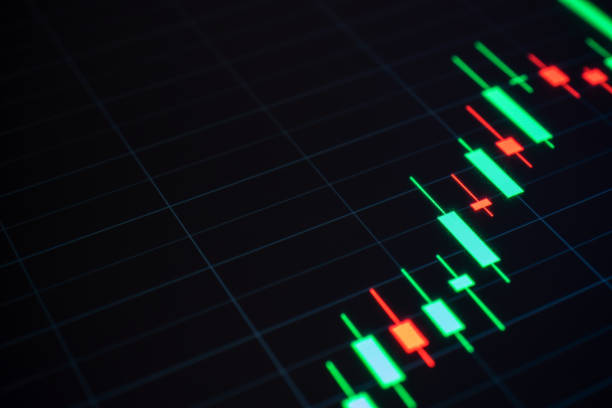GREAT REVERSAL STRATEGIES FOR ALL TIMEFRAMES
Reversal trading is a bad name. Are reversal strategies inferior, more risky, and to be avoided? After trading for more than 15 years myself, I can assure you that this is not true. The opposite is true.
Each new trend begins with a reversal of the previous trend. Reversal traders are able to predict recent trends and increase their profits by riding the trend longer. If you are looking for the best trends, it can be beneficial to look at reversals.
You can use the three strategies I’ve listed below (first, practice on the demo! The demo is a great way to learn. This article contains timeless concepts and techniques. They are addressing the core of the market and how price action works. By going through these strategies, my goal is to make you aware of the true nature and dynamics of the markets.
DIVERGENCES
Many traders have heard of divergence trading but have only scratched its surface. I want to give you a new perspective on what divergences are.
The price chart below has a regular RSI indicator. The RSI indicator is a momentum one, which means it measures how fast and strongly a market moves.
Every time the price action reached a new peak, I marked that with a box in blue. I kept the same period in the RSI indicator.
Something interesting is happening. You can see it.
The RSI will show us a lower peak each time that the price action makes a higher high. We call this a divergence because both the price action as well as the indicator are diverging.
Why is this so interesting?
The RSI is a trend strength indicator, and lower highs are a sign that the market has lost momentum. This is a very important insight, especially if you are trading long in the market. It could indicate a lower chance of trend continuation.
The RSI measures the strength and length of waves in a trend. In the screenshot below, I have marked the highs of the price action using a horizontal line.
The distances between each price high get smaller. The RSI highlights this as a divergence.
The last high sequence is particularly interesting. The price has been pushed three times into the same level, but was not able to move past it. This is a bearish chart pattern.
Bearish signals are the shrinking distances between previous highs in price and the failure to reach a new all-time high.
One common problem with many inexperienced traders is that they tend to be impatient and will often rush into their trades. It is not enough to see divergence for the price to move downward.
After a trend has ended, the price either goes into a range of sideways prices or reverts to the opposite direction.
We could continue to analyze the price movement and see if there is a possible market reversal. The bearish pressure increases when traders who are long in a trade exit. If enough traders exit their positions and new sellers enter, a trend reversal could occur.
In the screenshot, I have marked the low prices using arrows. In a bullish market, the market will usually make higher highs and higher lows. This pattern will continue to be present as long as it is.
A higher low means that there are still bulls buying up the price each time the market dips. You should wait for a market that has a lower bottom if you are looking for a high-probability short scenario. A more insufficient common means that buyers have not bought up the price at the same rate as before; this is an additional bearish criterion.
Zoom out to see the patterns in the large picture.
Below is a screenshot that shows the divergence (right) we’ve been looking at just below a previous high. The previous high had already been the source of a major trend reverse. Many traders will be looking again at the same level of price.
The current divergence also occurs in a market that is in a mature trend. The market has been on a rally for several weeks, and the price is significantly higher.
Why is this good for you?
The more this trend continues, the more people buy up this market. There are fewer buyers left who will be around for a while – who is going to drive the price up?
These buyers have a lot of unrealized gains. These traders will close their positions at the first sign that they are losing money to avoid having to give back profits. The selling pressure is also increased.
The price gave the first bearish signals a few candles after.
For the first time, the price has reached a new low. The RSI has also reached its lowest point.
You can also draw support/resistance on your indicator!
The price movement has become quite bearish. There is still one thing missing, namely a lower high.
In a bearish market, price action should reflect lower highs AND lower lowers.
A lot of traders are already aggressive and may be jumping into trades, but your win rate will likely suffer as you have missed a crucial piece of information.
The lower high has been achieved! After making the lower low, the price rose aggressively. It is common to see this. A famous trader said it best:
It makes sense since many buyers will leave the market after a long bullish cycle, and new sellers will enter the market. This power shift often leads to an increase in market volatility.
The optimal short was missing one piece: the break to a new low.
Why is this important? Only then can we be certain that the previous high was actually a lower one.
You can, however, also argue that you should trade those lower first highs with greater aggression. This is exactly what strategy 3 in the article attempts to do. Continue reading if you’re interested in an aggressive entry strategy.
The real trend began after the low (marked by a circle in the image below). The market volatility peaked near the top of the market, and then the trend emerged once the dust settled following the first lower high.




Post Comment